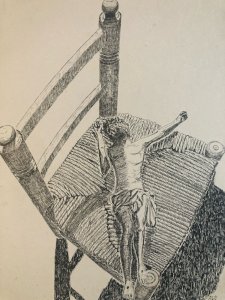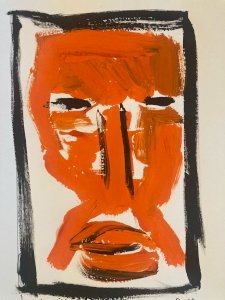- Sell Now
- Home
-
FURNISH
All STORAGE FURNITURE • Wardrobe • Chests of drawers, Chiffonnier • Sideboard • Shelves, Bookshelves • File cabinet • Sewing Furniture • Bar cabinet • TV Stand • Trunk, Chest TABLE & BEDSIDE TABLE • Dinner Table • Coffee table, side table, end table & Bedside • Console, Pedestal table & Selette • Serving Table, Trolley • Card Table • Draper's counter & table SEAT • Sofa • Armchair • Chair • Stool • Bench • Daybed • Beanbag & Footrest • Deckchair & Outdoor DESK, SECRETARY, DRESSING TABLE GARDEN LOUNGE BEDDING • Bed • Bedhead • Cradle, Moses basket CRAFT FURNITURE, WORKSHOP • Workbench • Stool, Ladder, Step • Easel & Trestle SCREEN PIANO
-
DECORATE
All TO PUT • Sculpture, Statuette • Vase & Planter • Dame Jeanne, Bonbonne & Flacon • Bridal globe, Dome • Pin tray, Ashtray • Candlestick & Candle • Photo frame • Stone, Fossil, Mineral • Earth Globe MIRROR WALL DECORATION • Painting • Engraving & Illustration • Poster • Tapestry • Wall Frame • Plate & Sign • Juju Hat & Wall Paniel • Mask • Hunting Trophy • Other object to hang CLOCK, PENDULUM & ALARM CLOCK ARRANGEMENT • Jar, Box & Case • Basket, Wastebasket & Crates • Magazine Rack & Vinyl Holder • Display & Spinner • Coat hook & Coat rack • Furniture Valet & Mannequin • Towel Holder • Suitcase & Travel Bag • Bottle Rack • Umbrella holder BATHROOM OFFICE • Mail holder • Bookends • Sulphide & Paperweight • Stationery FIREPLACE ACCESSORIES HOBBIES • Vintage Sport • Music • Vintage device • Smoking Item • Militaria, Ancient weapon • Miniature Vehicle • Game, Playing Cards • Collection object & Curiosity BIRD CAGE RELIGION, SPIRITUALITY
- TEXTURE
- ILLUMINATE
-
ACCOMODATE
All TABLE & SERVING • Plate • Silverware • Knife Holder • Glass • Bowl, Mug, Cup • Bowl, Ramekin & Cup • Dish, Cup & Salad Bowl • Tray, Basket & Server • Table Mat • Pitcher, Carafe, Bottle, Tea & Coffee Jug • Ice Bucket • Salt & Pepper shakers, Oil & Vinegar shakers • Sugar and jam maker • Gravy boat • Butter dish • Egg cup • Terrine OLD BALANCE CUTTING BOARD GRINDER CASSEROLE, SAUCEPAN & PAN KITCHEN UTENSIL & ACCESSORY
- TINKER
- KIDS
- Jewelry & Accessories
Login
Description
Delivery service: Colissimo Born in Paris on November 18, 1881, Paul BAUDIER, awakened by the charm of the Gâtinais of his childhood, was very early attracted by the countryside which influenced all his work. His secondary studies completed, he became a student and collaborator of his uncle Edmond Duplessis. Introduced, around the same time, to the technique of wood engraving by his uncle and by Eugène Dété, he soon worked for the "illustrated life". He exhibited in Paris, from 1900, at the Indépendants and at the Salon des Artistes Français where he presented an original wood: the portrait of his mother. He married, had three children and went to live in Gentilly. He took drawing classes at Juillan, Colarossi, in various academies, and brilliantly passed, before his military service, the competition for the best workers in France. Mobilized in 1914, seriously wounded in the first months of the war and taken prisoner, he remained for two years in Germany, then twelve months in Switzerland, in Kartigen near Thun: there he painted and drew scenes of prisoner camps, as well as landscapes that he exhibited, with success, in Geneva. Returning to France, Paul BAUDIER became a member of the Artiste Français, he had already obtained, at the Salon of this Society, an honorable mention in 1903 and a medal in 1906. In 1923, he was awarded the silver medal, in 1927, a gold medal at the International Exhibition, and a Medal of Honor in 1943. Member of the committee and the Jury of the Artistes Français of which he became President, he was made a knight in the National Order of the Legion of Honor in 1948. These are the main awards and distinctions that Paul BAUDIER will obtain during his life. They were well deserved, because this artist, a tireless worker, leaves a considerable and prestigious work as a designer, painter, engraver and illustrator. Let us judge by this simple enumeration of his main works over the course of half a century. He illustrated Confessions of Saint Augustine, The Poor Woman by Léon Bloy, Monsieur des Lourdines by Alphonse de Chateaubriand, Civilization, Possession of the World, The Lives of the Martyrs by Georges Duhamel, The Velvet Road, Letters to the Almazone and Letters to Sixtine by Rémy de Gourmont, The Light That Goes Out by Rudyart Kipling, The Life of Beethoven, The Life of Michelangelo, The Life of Tolstoy by Romain Rolland, The Mistress Servant by the Tharaud brothers, Love, Odes in His Honor, Romances Without Words by Paul Verlaine, Numa Roumestan by Alphonse Daudet, etc. Other works were published by Paul BAUDIER “at the artist’s expense”. He also produced works for bibliophile societies; He illustrated, for example, with colored woodcuts, the Lettres élémentaires sur la botanique by Jean-Jacques ROUSSEAU, for bibliophile pharmacists. An eminent gaveur, his illustrations were numerous and noted. He frequented the famous Groupe de l’atelier Lachenal in Chatillon where he made friends among the artists he met. Under the spell of this city and its surroundings, he decided to live there and had a pavilion and workshop built in 1927 on rue des Egroux (now rue Guy Moquet). It was under the cedar of Chatillon that he enjoyed spending time in the company of his friends, the master ceramists Edmond, Jean-Jacques and Raoul Lachenal. In this always welcoming hive, he met the great Sarah Bernhardt, the painters Van Dongen, Foujita and Suzanne Tourte, the sculptors Agnès de Frumerie, Halbout, Rispal, Févola… At the same time, he rubbed shoulders with the famous engravers, Edmond Dupluessis, Albert Decaris, P. A. Bouroux…, the writers, Valmy Baysse, Georges d’Esparbès, Paul Valéry… In August 1929, he had the pain of losing his wife, so he traveled around France to illustrate for the Society of Franco-Swiss Bibliophiles, “Tableau de la France”, by Jules Michelet. Paul BAUDIER trained many students in wood engraving, including his eldest daughter. His son Albert-Pierre wanted to learn the printing trade at the Ecole Estienne in Paris and graduated in 1925. Paul BAUDIER introduced him to Marthe Fequet, printer and typographer, successor to Emile Fequet (who was the collaborator until 1907 of Auguste Lepère, Painter-engraver). Partners, Marthe Fequet and Albert-Pierre BAUDIER printed the major works of Paul BAUDIER, as well as those of the greatest French and foreign Masters of the 20th century: Rouault, Matisse, Picasso, Braque, Miro, de Staël, Chagall, Arp… Type:Drawing Material:Ink Characteristics:Signed Theme:Landscape
Réf :
#287961
Related Products
Comments
Drawing Ink Wash Paul Baudier Signed Landscape Tree 1928 Rare Old
290€
31500 Toulouse
Ce site contient des liens d’affiliation pour lesquels je peux recevoir une compensation.
Description
Delivery service: Colissimo Born in Paris on November 18, 1881, Paul BAUDIER, awakened by the charm of the Gâtinais of his childhood, was very early attracted by the countryside which influenced all his work. His secondary studies completed, he became a student and collaborator of his uncle Edmond Duplessis. Introduced, around the same time, to the technique of wood engraving by his uncle and by Eugène Dété, he soon worked for the "illustrated life". He exhibited in Paris, from 1900, at the Indépendants and at the Salon des Artistes Français where he presented an original wood: the portrait of his mother. He married, had three children and went to live in Gentilly. He took drawing classes at Juillan, Colarossi, in various academies, and brilliantly passed, before his military service, the competition for the best workers in France. Mobilized in 1914, seriously wounded in the first months of the war and taken prisoner, he remained for two years in Germany, then twelve months in Switzerland, in Kartigen near Thun: there he painted and drew scenes of prisoner camps, as well as landscapes that he exhibited, with success, in Geneva. Returning to France, Paul BAUDIER became a member of the Artiste Français, he had already obtained, at the Salon of this Society, an honorable mention in 1903 and a medal in 1906. In 1923, he was awarded the silver medal, in 1927, a gold medal at the International Exhibition, and a Medal of Honor in 1943. Member of the committee and the Jury of the Artistes Français of which he became President, he was made a knight in the National Order of the Legion of Honor in 1948. These are the main awards and distinctions that Paul BAUDIER will obtain during his life. They were well deserved, because this artist, a tireless worker, leaves a considerable and prestigious work as a designer, painter, engraver and illustrator. Let us judge by this simple enumeration of his main works over the course of half a century. He illustrated Confessions of Saint Augustine, The Poor Woman by Léon Bloy, Monsieur des Lourdines by Alphonse de Chateaubriand, Civilization, Possession of the World, The Lives of the Martyrs by Georges Duhamel, The Velvet Road, Letters to the Almazone and Letters to Sixtine by Rémy de Gourmont, The Light That Goes Out by Rudyart Kipling, The Life of Beethoven, The Life of Michelangelo, The Life of Tolstoy by Romain Rolland, The Mistress Servant by the Tharaud brothers, Love, Odes in His Honor, Romances Without Words by Paul Verlaine, Numa Roumestan by Alphonse Daudet, etc. Other works were published by Paul BAUDIER “at the artist’s expense”. He also produced works for bibliophile societies; He illustrated, for example, with colored woodcuts, the Lettres élémentaires sur la botanique by Jean-Jacques ROUSSEAU, for bibliophile pharmacists. An eminent gaveur, his illustrations were numerous and noted. He frequented the famous Groupe de l’atelier Lachenal in Chatillon where he made friends among the artists he met. Under the spell of this city and its surroundings, he decided to live there and had a pavilion and workshop built in 1927 on rue des Egroux (now rue Guy Moquet). It was under the cedar of Chatillon that he enjoyed spending time in the company of his friends, the master ceramists Edmond, Jean-Jacques and Raoul Lachenal. In this always welcoming hive, he met the great Sarah Bernhardt, the painters Van Dongen, Foujita and Suzanne Tourte, the sculptors Agnès de Frumerie, Halbout, Rispal, Févola… At the same time, he rubbed shoulders with the famous engravers, Edmond Dupluessis, Albert Decaris, P. A. Bouroux…, the writers, Valmy Baysse, Georges d’Esparbès, Paul Valéry… In August 1929, he had the pain of losing his wife, so he traveled around France to illustrate for the Society of Franco-Swiss Bibliophiles, “Tableau de la France”, by Jules Michelet. Paul BAUDIER trained many students in wood engraving, including his eldest daughter. His son Albert-Pierre wanted to learn the printing trade at the Ecole Estienne in Paris and graduated in 1925. Paul BAUDIER introduced him to Marthe Fequet, printer and typographer, successor to Emile Fequet (who was the collaborator until 1907 of Auguste Lepère, Painter-engraver). Partners, Marthe Fequet and Albert-Pierre BAUDIER printed the major works of Paul BAUDIER, as well as those of the greatest French and foreign Masters of the 20th century: Rouault, Matisse, Picasso, Braque, Miro, de Staël, Chagall, Arp… Type:Drawing Material:Ink Characteristics:Signed Theme:Landscape
Réf :
#287961
 English
English  Français
Français 























